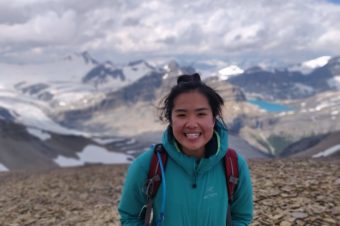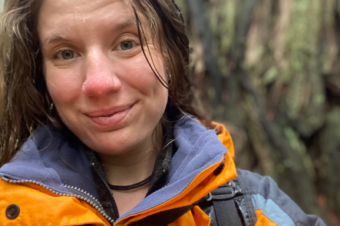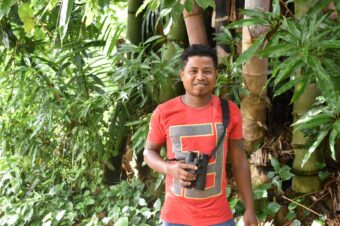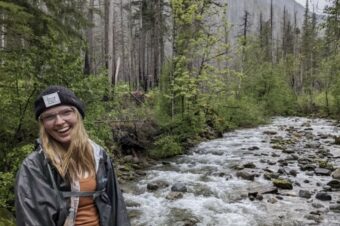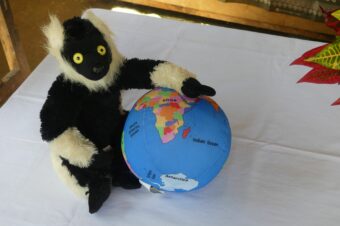Blog by MBP Volunteer, Luke
The following is an account of a typical day volunteering on the P. simus team at Kianjavato Field station. Awaken to a mist covered landscape, in the distance the mystical cliffs of Vatovavy are enveloped by a white shroud. Gather my equipment for the day, most importantly water bottles and camera.Proceed with the morning hike down to what could be considered the cafeteria here; this morning walk usually possesses the most pleasant weather and atmosphere of the day. The Sun has not yet risen to its domineering pedestal.At the cafeteria, materials and equipment are gathered for the day’s lemur monitoring.Breakfast is served around 6 A.M. and invariably consists of a slightly altered pile of rice, and in my opinion usually tastes better than one would think. At around 6:30 (hopefully), everyone piles into the KAFS transportation vehicle, currently it is something akin to a tractor trailer truck, and moves out for the daily grind.
The crew meets the guides at Kianjavato, the town closest to the entrance to the monitoring sites. They take their water, peanuts, and ATS tracking device and proceed to track the daily pro-simians. The decision to track which animal is based on whichever ones have not been done at a certain time. Each animal is followed three times in a month: morning, mid-morning, and afternoon. So, three follows for each team are accomplished each work day, that’s six follows total. Certain males have a tracking collar and are pinpointed using the ATS and antennae. Each male is known to typically travel in a certain group and that is how the others are located initially. The females have a coloured collar possessing a particularly shaped and coloured metal tag that distinguishes them. Five minute interval scans are then enacted, with the volunteers recording.Often they are resting, which tends to make our lives easier; but also often, they are moving, which means so are we and unfortunately we can’t jump around on bamboo.It can be a bit hectic and sometimes painful, but also quite amusing. After three follows the guides lead us out and we reconvene at Kianjavato to wait for the truck. This is followed by data input, which is far too exciting to extrapolate on here. That’s it in a nut shell, there is certainly more that can be said of life at KAFS, but perhaps that can wait.


